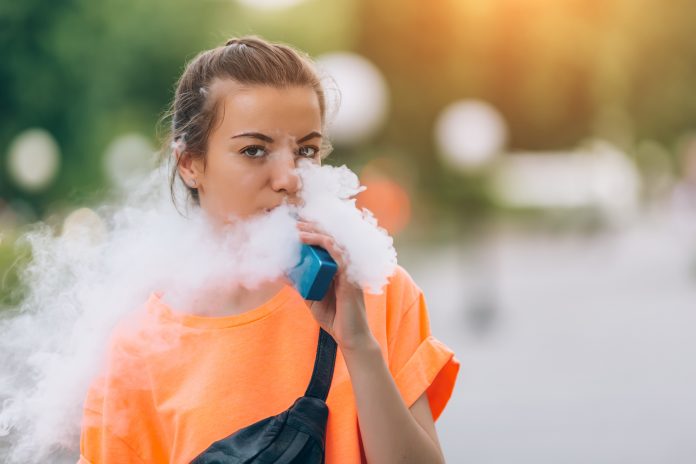Alastair Graham, CEO of AgeChecked, discusses how vaping retailers can conduct online age checks to ensure that no products are sold illegally to anyone under the age of 18
E-cigarettes or vape pens are one of the most quietly compelling consumer technology success stories of the 21st century. First introduced in the early 2000s, they have since enjoyed what Euromonitor has described as ‘eyewatering’ worldwide growth rates, with the number of vapers globally growing from seven million in 2011 to 35 million by 2016, and expected to hit 55 million by 2021.
This growth is not without its concerns, however – particularly when it comes to the demographics and trajectories of those buyers. Vape pens might avoid a catalogue of health concerns associated with cigarettes, but they still contain nicotine – and so there are understandable concerns that the practice could lead to nicotine addiction. Not necessarily a major problem in itself – but a worrying factor if it encourages a rise in the uptake of cigarette smoking, particularly among young people.
And there are signs that it does. The latest Public Health England findings suggest that among young people ‘vaping continues to be associated with smoking’. Research has also found that adolescents who begin using e-cigarettes are more likely to start smoking. Whilst regular use of e-cigarettes amongst 11 to 18-year-olds in the UK remains relatively low, this is a link that cannot be ignored.
Meanwhile, a Sunday Times investigation in October 2018 suggested that Britain’s vaping industry is guilty of using cartoon characters and imagery of sweets and popcorn to market their products specifically at young people.
And John Dicey, chief executive of the UK’s biggest addiction clinic, has warned that “We have noticed a sharp increase in the last half of 2018 and first quarter of 2019 in the number of enquiries from youngsters – and their parents – who took up vaping in their early teens and now wish to quit.”
The onus on retailers
The government is not toothless when it comes to restricting youth uptake of e-cigarettes, however. In October 2015, UK law changed in relation to the sale of e-cigarettes and vaping products. It became illegal for retailers – both online and offline – to sell these products to anyone under 18.
In theory, this means that the responsibility of verifying the age of customers lies with the e-cigarette retailer, whether a bricks-and-mortar store or an online shop. Website owners, just like physical retailers, can be fined up to £2,500 should they be found to have carried out an illegal sale.
And in practice, as reports of the potential dangers of e-cigarettes for young people ramp up, it seems likely that a clampdown on said retailers, both online and offline, is on the cards.
Age verification online
For physical e-cigarette retailers, age verification is relatively simple. Corner shops and supermarkets alike are, of course, well-used to asking for proof of age when purchases of alcohol and other restricted products are made. The Challenge 25 initiative is well-established. Specialist vape shops should already have followed suit following the 2015 legislation, though various journalistic, Trading Standards and local council investigations have suggested that numerous outlets still sell to under-18s.
Online, however, things are a little more challenging. Of course, e-tailers of age-restricted products such as alcohol and knives have long had to implement tools to ensure that purchasers are an appropriate age. Mechanisms do exist to perform this verification. But they vary wildly in terms of efficacy (some websites will allow a purchase but require photographic proof of age to be presented at the point of delivery) and impact on the customer (some tools cause substantial friction to the online journey, requiring the customer to enter a substantial amount of information every time they wish to make a purchase).
Frictionless customer journeys are at the heart of effective e-commerce. Additionally, e-commerce channels look set to rise significantly as a distribution channel for e-cigarettes, thanks to the wider availability of consumer choice. Back in 2016, Ernst & Young surveyed 3,000 vape users and found that around 35% of them purchased their devices in specialist (physical) stores, followed by 21% of them making their purchase online – the growth potential for online vape sales seemed clear. As such, online retailers of e-cigarettes need to prioritise seamless age verification if they wish to remain competitive.
Striking a balance
How best to balance online customer experience and effective age verification? Tools such as AgeChecked require customers to verify their age using an in-depth process only once. Evidence from credit card providers, driving licenses or mobile phone operators, for example, are all highly reliable means of proving an individual’s age, but they take time and effort to provide. An online shopper required to refer to them every time they wish to make a purchase is unlikely to become a repeat customer.
Instead, this evidence can be used only for an initial set-up and age check, which then delivers an age-verified account. And it is the account, rather than the credit card, driving license or phone contract, which is used to provide age verification each time the customer uses a participating online store. They sign into their AgeChecked account as normal and are granted instant access to the e-tailer’s goods.
Online retailers of e-cigarettes and associated goods look likely to come under increasing pressure to prevent young people from purchasing vapes. Interest in how best to control teenage access to e-cigarettes is rising; only recently, the US FDA imposed severe restrictions on e-cigarette flavours deemed to appeal to young people. Yet, as outlined earlier, the global vaping market – and particularly the online vaping market – still has massive growth potential.
Savvy vaping e-tailers, then, should take a proactive approach to deliver smooth and seamless age-verification as part of the most compelling customer journeys they can build. The rewards for proactivity could be rich indeed.











